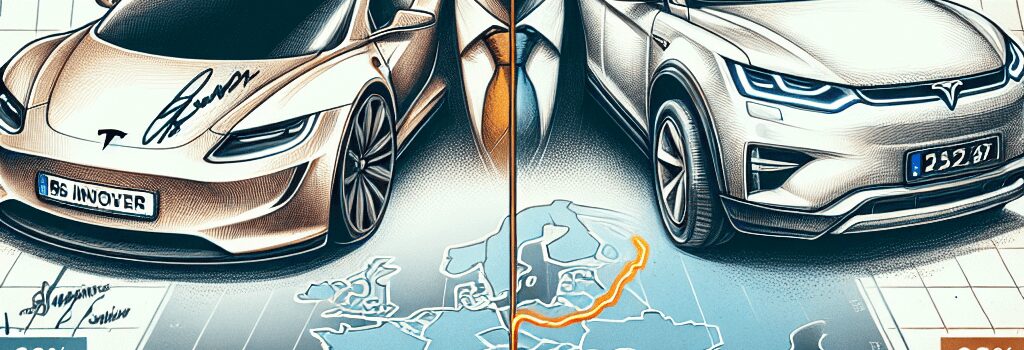Tesla vs BYD: BEV Sales Surge 28% in Europe

Europe’s new car registrations in April reveal a dramatic shift: while overall sales remained flat year-over-year, plug-in electric vehicle (EV) registrations soared. According to JATO Dynamics, battery electric vehicle (BEV) registrations jumped 28 percent, and plug-in hybrid EV (PHEV) sales increased 31 percent. Most automakers capitalized on this trend—except Tesla, whose sales plummeted 49 percent compared to last April.
Market Performance Overview
- Tesla Model Y: Registrations dropped 53 percent to 4,495 units, relegating it to 9th place in the European BEV rankings.
- Brand Rankings: Volkswagen Group led with a 61 percent increase to 23,514 EVs sold, while Tesla fell to 11th with only 7,165 units.
- BYD’s Ascent: The Chinese automaker reached 7,231 BEV registrations, overtaking Tesla by leveraging both its PHEV roster—unfazed by BEV tariffs—and its Blade Battery technology.
Charging Infrastructure and Regional Disparities
Infrastructure variations across Europe significantly influence consumer adoption. Western Europe, led by Germany and France, supports over 300,000 public chargers with an average DC fast-charging power of 120 kW. In contrast, Central and Eastern European networks average just 60 kW per station. VW’s ID series benefits from Ionity’s 350 kW hubs, whereas Tesla’s Supercharger V3 units peak at 250 kW and have seen slower rollouts post-adapter standardization.
Battery Technologies and Production Challenges
BYD’s success stems partly from its proprietary Blade Battery—a lithium iron phosphate (LFP) pack delivering 140 Wh/kg energy density, enhanced thermal stability, and lower cost. Tesla, meanwhile, is scaling up its 4680 cell factories in Grünheide and Austin, targeting 300 Wh/kg with advanced nickel–cobalt–aluminum (NCA) chemistries. Supply chain bottlenecks—particularly cobalt scarcity—have trimmed Model Y output by approximately 10 percent this quarter.
“This is a watershed moment for Europe’s car market,” says Felipe Munoz, Global Automotive Analyst at JATO Dynamics. “BYD’s entry challenges incumbents on price, range, and technology integration.”
Market Outlook and AI-driven Manufacturing
Analysts forecast European BEV market share will exceed 25 percent by 2027, propelled by stricter CO₂ targets and consumer incentives. AI and machine learning are streamlining production: VW employs computer vision to detect welding defects in real time—cutting error rates by 15 percent—while Tesla’s deep-learning models optimize electrode coating uniformity, enhancing battery consistency by 5 percent.
Additional Analysis
- Supply Chain Diversification: OEMs are securing lithium hydroxide and nickel supply through long-term contracts in Australia and Indonesia to mitigate geopolitical risks.
- Software & Connectivity: Over-the-air updates, AI-driven energy management, and integrated driver-assist features are now decisive purchase factors.
Key Takeaways
- Europe’s EV landscape is rapidly evolving, with diverse battery chemistries vying for dominance.
- Charging infrastructure investments and harmonized standards remain essential to sustain growth.
- AI-driven automation and analytics will be critical levers for cost reduction and quality control.